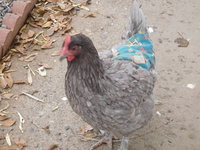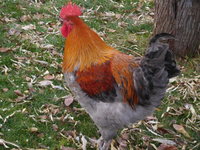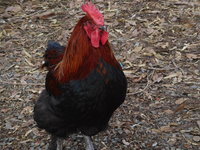- Thread starter
- #6,991
- Sep 18, 2015
- 2,969
- 3,299
- 421
Is this considered too much color?
Follow along with the video below to see how to install our site as a web app on your home screen.
Note: This feature may not be available in some browsers.
View attachment 1213165
Is this considered too much color?
Thank you! Not enough color is definitely not my problem!I like him. I could use a rooster with that much color!

View attachment 1213165
Is this considered too much color?
I agree with you 100% .
it is my argument with a French Marans Syndicat ,to develop a cockerels and a pullets lines .will be easier to fix the traits and breed out the fault ,plus be able to produce a show quality marans .
I m doing the same thing .a each hen will have her own line . many ,many lines .
the stock we are working with a result of a out cross ,so they degree of they inheritance ( how much stable genes they ll be able to pass down to they progeny ) is very low .not predictable .
a Black copper hen is very hard to work with ,because of her Autossomal red is not apparent . we can not see it .we only see the hackle ,but that is linked to a sex linked genes not the Autossome genes .
so we don t know how much autossomal red she have ..we can tell if have have too much ( coppery chest ,coppery hears tufts ) ,but we can t tell if she has just enough .
breeding a cockerels line and a pullets lines separately will fix the problem .
you start to think like a pro Kfelton0002 .Bravo .
chooks man
PS = when we work with a marans chooks breed we need to add a Dark Egg Layer Line ( DELL) this line will be bred just for the dark eggs genes .
Yes and throw in the dark eggs needed for this breed which is one of, if not the most important trait that sets this breed apart. Aye yi yi.

Ok, Lets shoot from the heart. I am having a difficult time figuring out where I am going with my flock. Body type is where I am starting. Also working on adding copper to my girls. I just had one of my pullets lay her first egg and I am very happy with the color. I think it's the darkest I have gotten so far. I guess I am torn between the two sets of standards being I am in the U.S. I don't know if anyone else feels this way. Me and my flock are in limbo. I am also not sure if I want to go with Black Copper. I am leaning towards Blue Copper. Any input would be awsome! Thank you!



